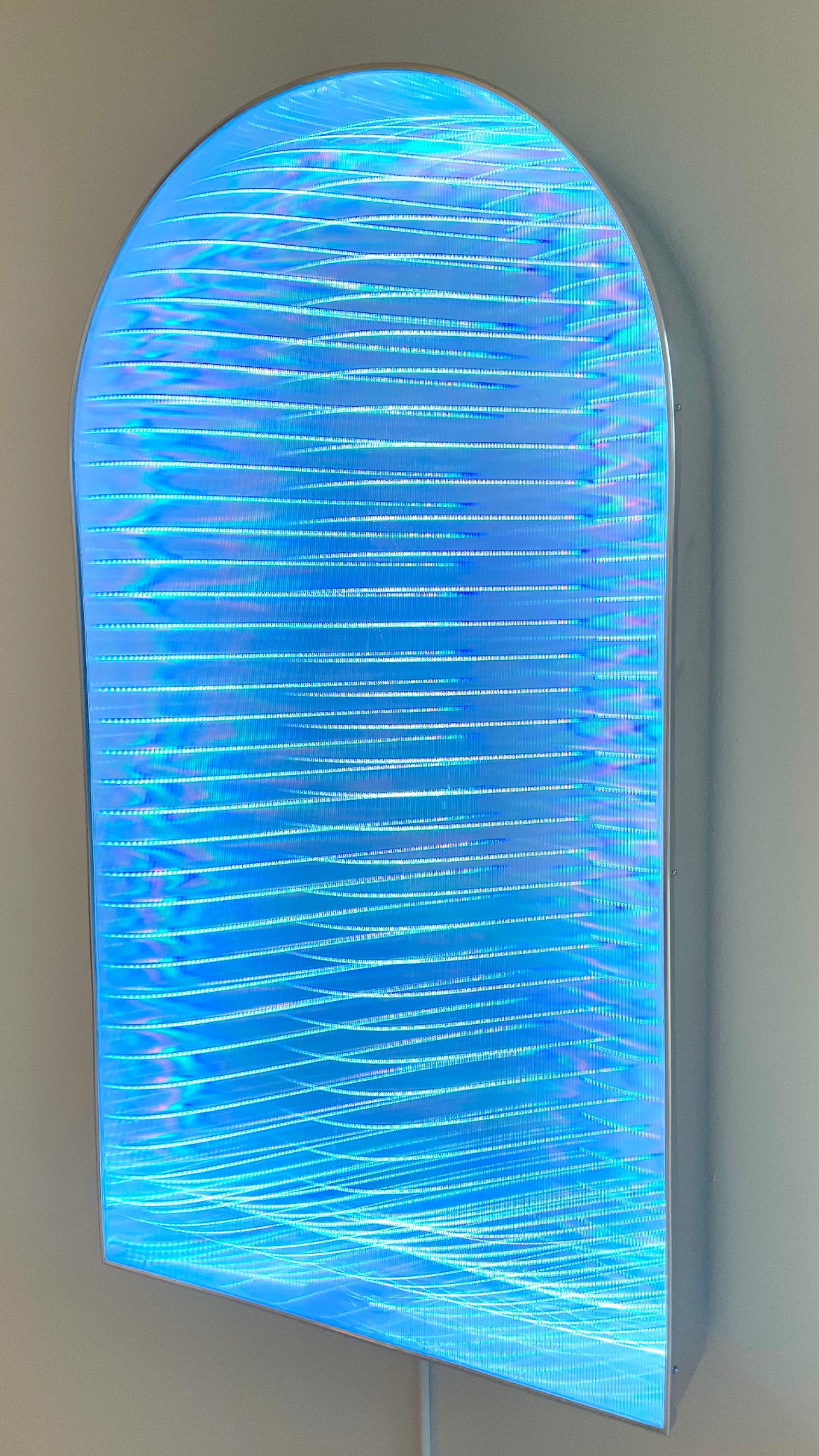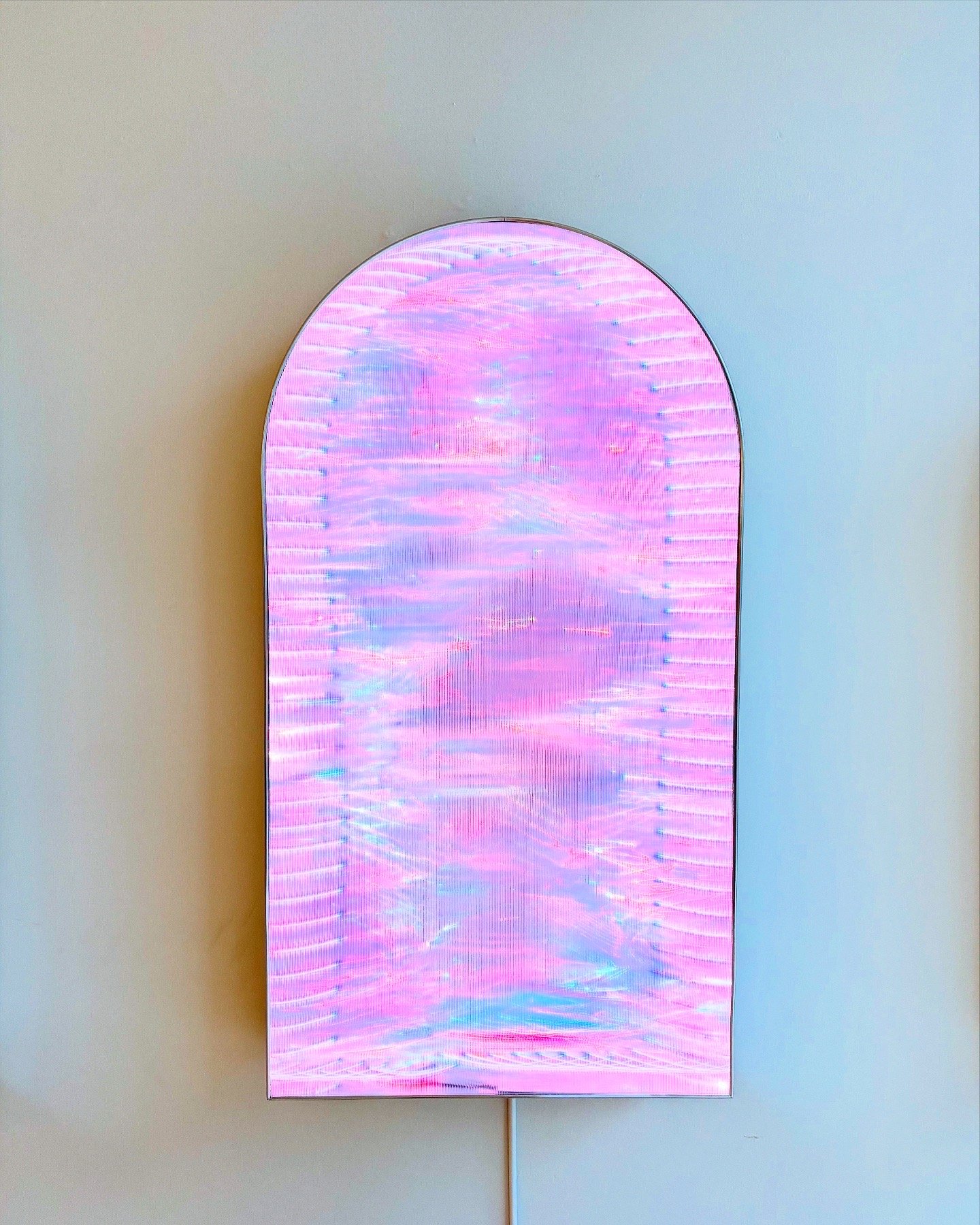Lucid
2024-2025
Neskirkja, Vesturbær, Reykjavík, Iceland
,,Let there be light."
And there was light.
Lucid are light works that draw inspiration from church windows and provide insight/views into the intangible and abstract. The works work with an optical illusion that encourages the viewer to part with what they know, look inward and focus on the light itself and the beauty in it.
At the very beginning of Genesis, God creates light. Light is the foundation of our life on earth, and we always seek the light.
Light governs everything we do. Since time immemorial, sunlight has energized us, but artificial light has increasingly influenced our behavior and body clock. It could be said that daylight, which comes from the sky, is what we are really calling upon, since its effect on our inner being is so great. But the artificial light that has the second greatest effect on us is the blue light that comes from the various screens that are activated by the infinite flow of information from the satellite to the sky above.
We pray to the sky.
But what is in the sky? A satellite and a celestial body.
The church windows are made in the classical style, curved into a semi-triangle that emphasizes the Holy Trinity. When you look at them, you might wonder whether you are looking in or out. Does it matter at all?
You are looking at the light itself.
The works are abstract and I am essentially painting with light. I use various materials to distort the view, so the works are constantly changing depending on the light and location.
It is difficult to get a handle on what exactly you are looking at. The eye knows what it is looking at, but the brain does not understand it.
Skúli the priest writes here:
,,Windows are remarkable phenomena. They mark a kind of separation between the interior space and the environment. And they are before our eyes at all times. How many waking hours of the day do we spend on the "screen". Research shows that this thin, transparent film has a great influence on how we treat each other, in traffic, in online communication. It is as if the window creates distance, makes communication more impersonal and increases the likelihood that we we show a behavior that we would not otherwise offer to people, face to face.
In the artist's treatment, it seems to me an attempt to analyze the fact that our reality only appears through the intermediaries of the senses. She speaks of this in the text of the exhibition catalog that the works work with, "a visual illusion that encourages the viewer to part with what he knows, to look inward and focus on the light itself and the beauty in it."











